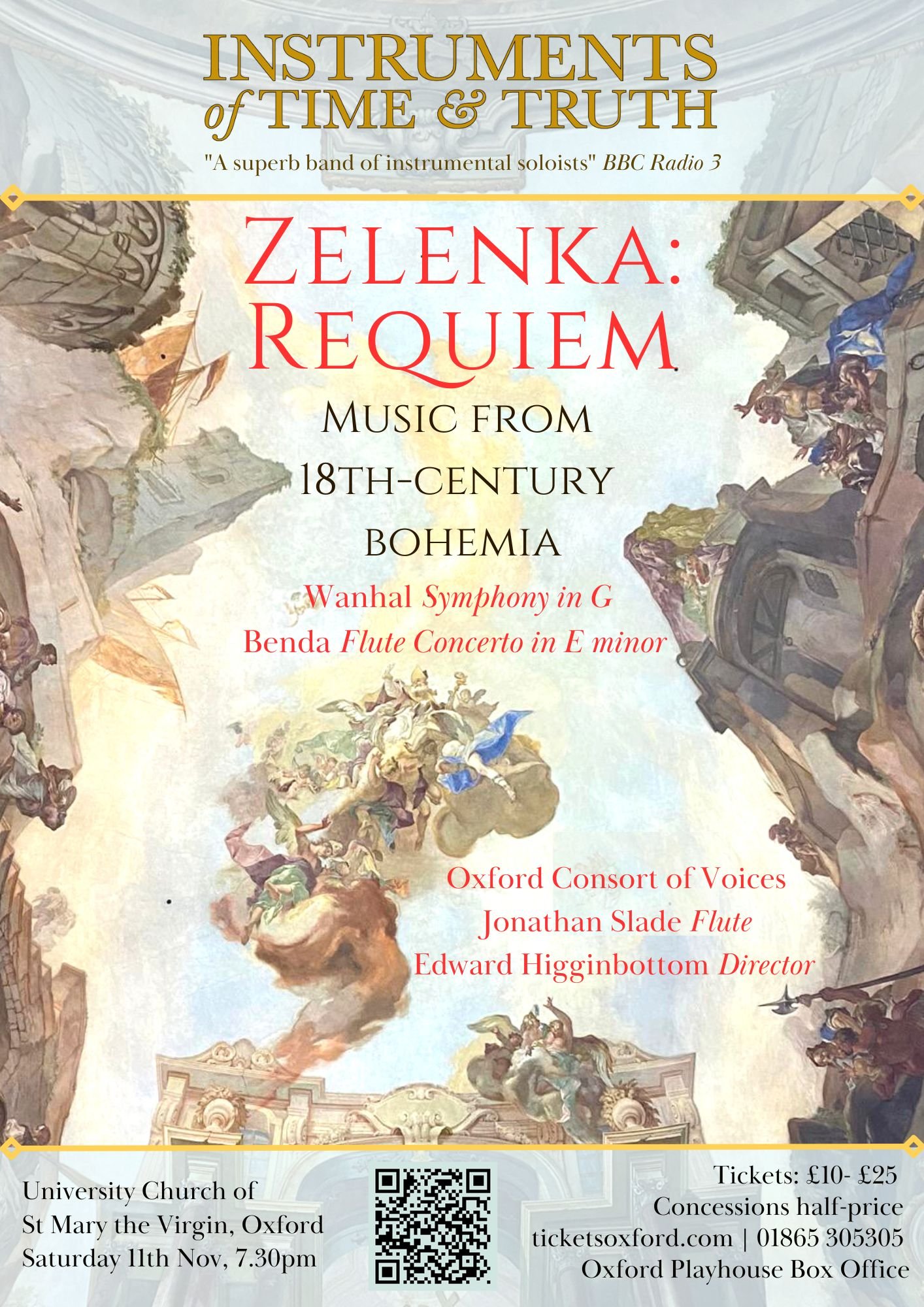Zelenka: Requiem
Edward Higginbottom gives us an insight into our upcoming concert at University Church of St Mary the Virgin on the 11th November
IT&T’s offering this November (11 November, Armistice Day) comprises music by Bohemian composers: Jan Dismas Zelenka (1679-1745), Johann Baptist Wanhal (1739-1813), and Franz Benda (1709-1786). Each had a lowly beginning, born into modest circumstances, in Wanhal’s case into serfdom. Each made his way in due course westwards, to prestigious posts in Austria and Germany. Zelenka was for many years in the employ of the Dresden Court, Wanhal settled in Vienna as a hugely successful freelance composer, and Benda worked for Frederick the Great in Potsdam for some 50 years.
The centrepiece of the programme is Zelenka’s Requiem in D minor (ZWV 48). This is not his only Requiem setting, but it is arguably the most interesting and varied. It was commissioned by Maria Josepha (the older daughter of the Emperor Joseph I) now settled at the Dresden Court as the wife of Frederick August II. It was performed in Dresden on one of the anniversaries of the death of Maria Josepha’s father, sometime in the late 1720s. By this time Zelenka had received instruction from Antonio Lotti in Italy and Johann Joseph Fux in Vienna. He was well-acquainted with advanced contrapuntal techniques, and familiar also with a range of harmonic resources. A Requiem Mass allowed him to show off both. In addition, Zelenka had a keen ear for instrumental colour, scoring for obligato violins, oboes, bassoons and extensively for chalumeau (a forerunner of the clarinet). The varied scorings, and diversity of movements, produce a kaleidoscopic effect. Our Oxford performance will offer a very rare opportunity to hear this great work, on the day in the year when as a nation we remember those who died in the two world wars.
As for Johann Baptist Wanhal, his contribution to the evolution of the symphony is immense. He wrote a hundred or so works in the genre, works greatly admired by his contemporaries (including Mozart, Haydn and Beethoven), and immensely popular in late 18th-century Vienna. Some of his symphonies were even, though mistakenly, attributed to Haydn. We will perform a Symphony in G major (Bryan G6). It speaks eloquently of Wanhal’s fluency and genial manners – exactly what the Viennese meant when they spoke of Gemütlichkeit.
Franz Benda’s Concerto in E minor for solo flute and strings is a product of composer’s Potsdam days. It is more than likely that it was performed at the German Court by Johann Joachim Quantz, the leading flautist of the time. It provides the final panel our Bohemian Triptych.
The programme as a whole affirms the role of Instruments of Time & Truth in presenting music lying off the beaten track, but which is every bit as engaging as the music we know and love. It is music we can also be very fond of, if we get to know it. On 11 November, in the University Church, you have that opportunity.

